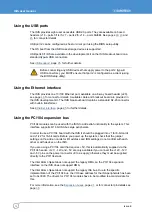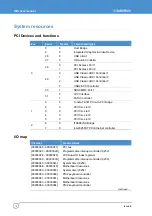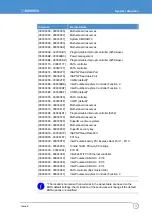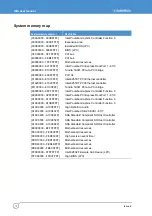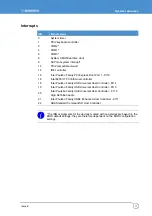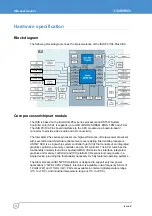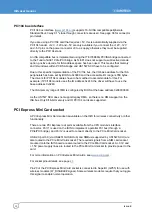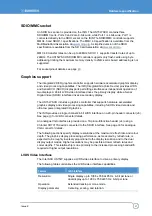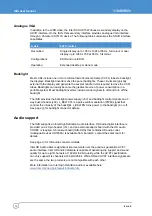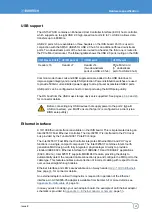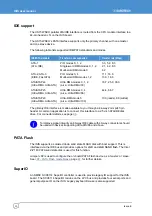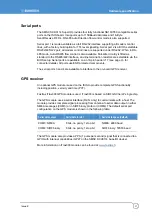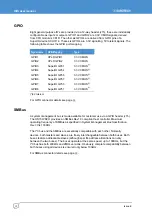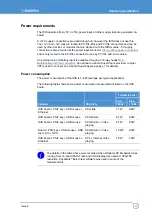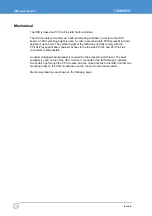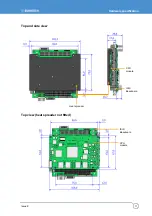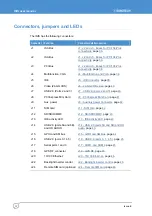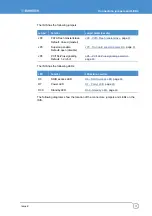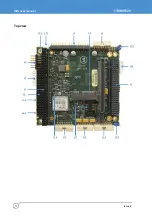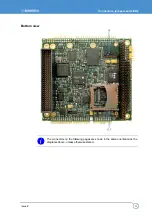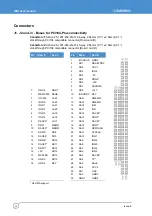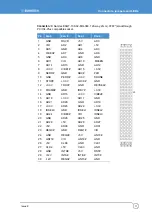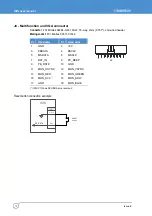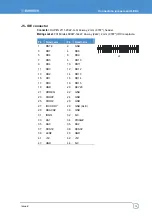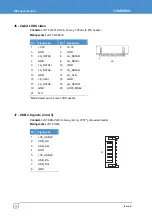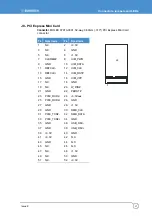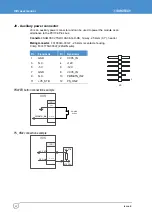
Hardware specification
Issue E
27
Serial ports
The SMSC SCH3114 SuperIO provides four fully functional NS16C550 compatible serial
ports on the ISIS board. It supports up to 115KBaud data rates and 16-Byte
Send/Receive FIFO’s. RS-485 Auto Direction flow control mode is also supported.
Serial port 1 is made available as a full RS-232 interface supporting all modem control
lines, with a factory build option for TTL level signalling. Serial port 2 is a BIOS selectable
RS232/485/422 port; all modem control lines are supported under RS-232. When in RS-
485 mode, Auto-RS485 flow control is also available. Fail-safe circuitry is fitted as
standard to the RS485/422 interface, and line termination resistors are selectable via the
BIOS setup. Serial ports are available on an 18-pin header J17 (see page
for
connector details). All ports use ESD protected components.
The serial ports 3 and 4 are available to interface to the on-board GPS receiver.
GPS receiver
An optional GPS module is used on the ISIS to provide complete GPS functionality
including position, velocity and time (PVT).
Fastrax iTrax300 GPS module is used. iTrax300 is based on SiRF GSC3e/LP single chip.
The GPS module uses a serial interface (Rx/Tx only) to communicate with a host. The
module provides complete signal processing from antenna to serial data output in either
NMEA messages (COM3) or in SiRF binary protocol (COM4). The default serial port
configuration on the GPS module is shown in the following table:
Serial data output
Serial data format
Serial data speed (default)
COM3: NMEA
8 bits, no parity, 1 stop bit
NMEA: 4800 baud
COM4: SiRF binary
8 bits, no parity, 1 stop bit
SiRF binary: 57600 baud
The GPS module also provides a PPS (1 pulse per second) signal that is connected to a
GPIO with interrupt capabilities (GP27 on the SMSC SCH3114 SuperIO device).
More information on iTrax300 module can be found at:


